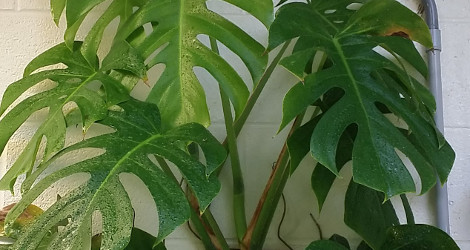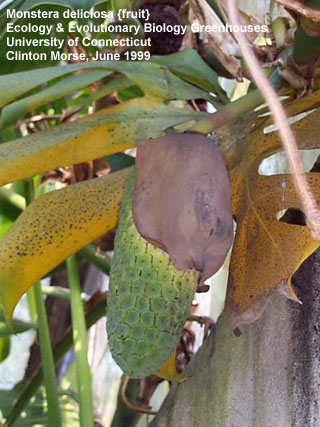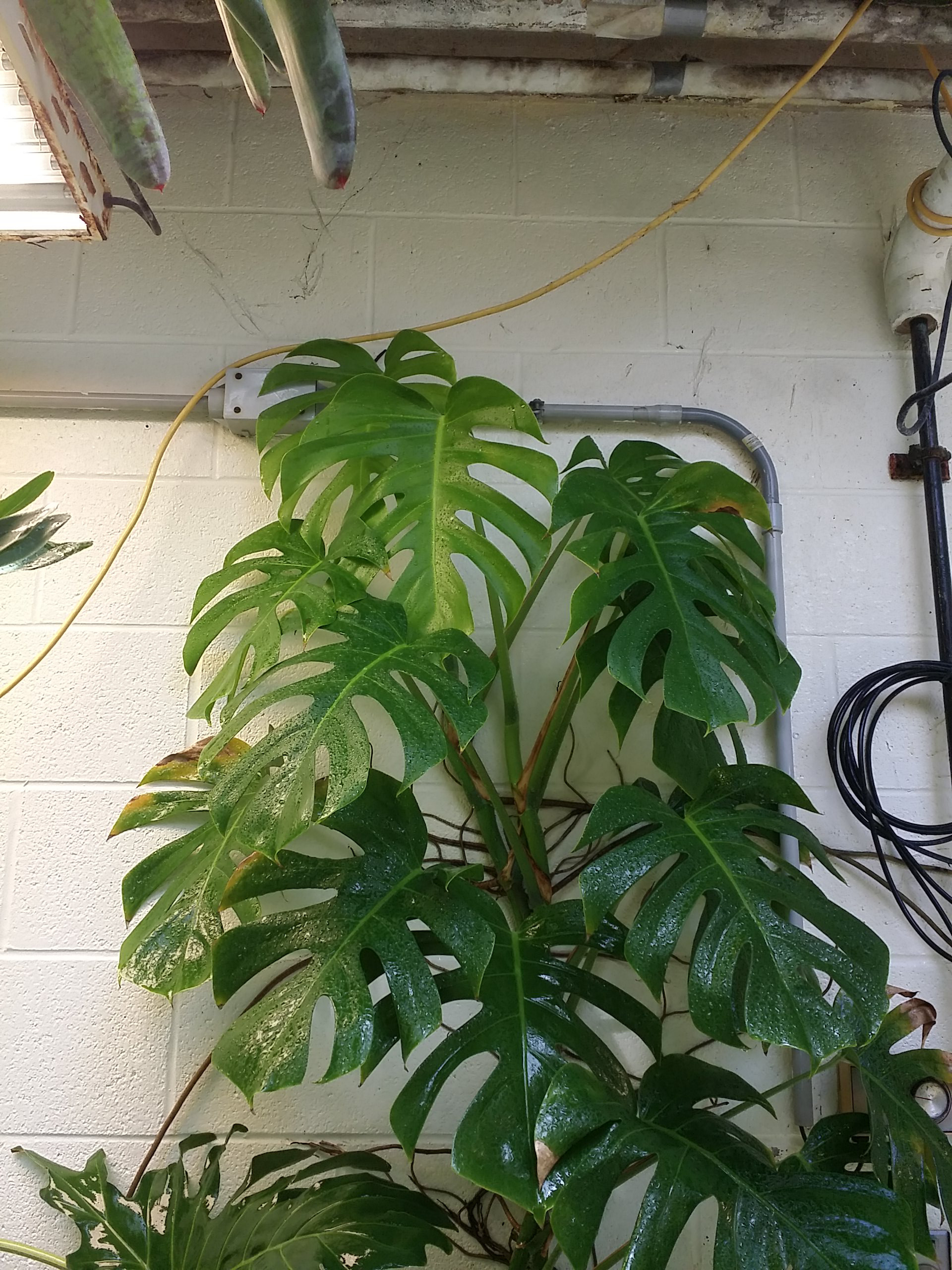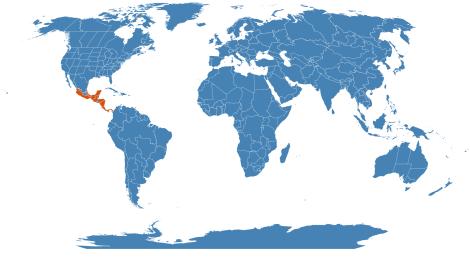Accession Data
Monstera deliciosa
Common Name: Swiss Cheese Plant
Family: Araceae
Country of Origin: Mexico (Veracruz, Oaxaca, Chiapas) to C. America
Description: A jungle climbing relative of the philodendron from Mexico and Guatemala. It is seen in gardens in tropical and subtropical areas, growing well in partial sun or shade. The plant begins bearing after three years. Popular as a houseplant, it seldom fruits in the home. The large pinnate leaves are perforated with oblong or oval holes, hence one common name. The 9", dull, deep green, cone-like fruit is actually an unripened flower spike, covered with hexagonal scales that dry out and separate as the fruit ripens from the base upwards, revealing the white pulp. It takes a little longer than a year to mature to an edible stage. Unripe fruit, if eaten causes irritation to the mouth and throat because of the oxalic acid. It can be induced to ripen by picking when the base has started to wrinkle and wrapping in a bag for a few days. When unwrapped, the scales should have separated.
Another interesting characteristic of this plant is that the seedlings, upon germination, will grow in the direction of the darkest area (not just merely away from light) until they encounter the base of a tree to grow on. They will then begin to climb toward the light which is generally up into the canopy of the tree upon which it is growing.
Propagated by cuttings of mature wood or air layering.
Uses: Unripe fruit can cause swelling of mucous membranes...
Accession Data
USDA Zone: 10a-11
Accession #: 198500876
Accession Date: 1985-12-31 00:00:00
Bloom Status: 🪴 Not Flowering
Location: 4112
Quantity: 1
Source: Unknown
Classification
Division: Magnoliophyta
Class: Liliopsida
Subclass: monocots
Order: Alismatales
Family: Araceae
SubFamily: Monsteroideae
Tribe: Monstereae
Flowering Data:
This accession has been observed in bloom on:| Year | Jan | Feb | Mar | Apr | May | Jun | Jul | Aug | Sep | Oct | Nov | Dec | ||||||||||||||||||||||||||||||||||||||||
|---|---|---|---|---|---|---|---|---|---|---|---|---|---|---|---|---|---|---|---|---|---|---|---|---|---|---|---|---|---|---|---|---|---|---|---|---|---|---|---|---|---|---|---|---|---|---|---|---|---|---|---|---|
| 2025 | ||||||||||||||||||||||||||||||||||||||||||||||||||||
| 2024 | ||||||||||||||||||||||||||||||||||||||||||||||||||||
References
- California Rare Fruit Growers WWW Site
- The Plant List (2013). Version 1.1. Last accessed on Tuesday, March 01, 2016.
- WCSP (2016). World Checklist of Selected Plant Families. Facilitated by the Royal Botanic Gardens, Kew. Last accessed on Tuesday, March 01, 2016.
- R. Strong Jr, Donald & S. Ray Jr, Thomas. (1975). Host Tree Location Behavior of a Tropical Vine (Monstera gigantea) by Skototropism. Science. 190. 804-806. 10.1126/science.190.4216.804. Last accessed on Thursday, May 24, 2018.
Images




